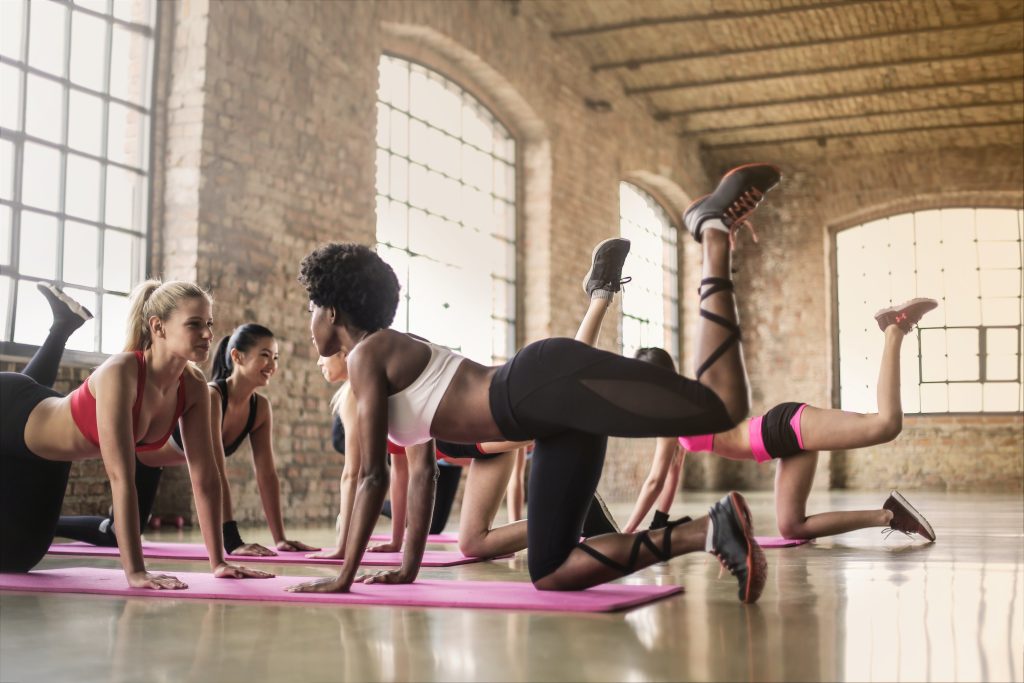Learn how incorporating flexibility and balance exercises into your routine can help prevent falls and improve overall stability.
How Flexibility and Balance Exercises Can Prevent Falls

Did you know that flexibility and balance exercises can help prevent falls? It might sound surprising, but these exercises play a crucial role in keeping you on your feet and preventing accidents. In this article, we will dive deep into the importance of flexibility and balance and how they can help you avoid those dreaded trips and slips.
Understanding the Importance of Flexibility and Balance
Before we get into the nitty-gritty, let’s first understand why flexibility and balance are so important when it comes to fall prevention. Flexibility refers to the range of motion in your joints and muscles, while balance refers to the ability to maintain stability and prevent falls.
Both flexibility and balance deteriorate with age, making us more prone to falls. By incorporating specific exercises into your routine, you can improve your flexibility and balance, reducing the risk of accidents and injuries.
The Role of Flexibility in Preventing Falls
Flexibility plays a crucial role in preventing falls by improving your range of motion. As we age, muscles and tendons become less flexible, increasing the likelihood of stiffness. This lack of flexibility can lead to imbalances and instability, making falls more likely.
Stretching exercises such as yoga or Pilates can help improve flexibility by elongating muscles and increasing joint mobility. These exercises not only make you feel great but also enhance your body’s ability to react to unexpected situations and maintain balance.
For example, practicing yoga regularly can improve the flexibility of your spine, hips, and shoulders. This increased flexibility allows you to move more freely and with greater ease, reducing the risk of falls caused by restricted movement.
In addition to yoga, incorporating dynamic stretching exercises into your routine can also improve flexibility. Dynamic stretching involves moving your joints and muscles through a full range of motion, helping to warm up your body and increase flexibility. Examples of dynamic stretching exercises include arm circles, leg swings, and torso twists.
The Role of Balance in Preventing Falls
Balance is like your internal superhero, always ready to save the day when you find yourself on uneven ground or facing unexpected obstacles. Without proper balance, even the most mundane tasks can become risky endeavors.
Engaging in balance exercises strengthens the muscles and improves coordination, making it easier for your body to react and adjust to changes in the environment. Exercises like standing on one leg or practicing tai chi can enhance your proprioception, the awareness of your body’s position in space, making you feel more stable and secure.
For instance, practicing tai chi involves slow, controlled movements that require you to shift your weight from one leg to another while maintaining balance. This type of exercise not only improves your balance but also enhances your overall body awareness and control.
In addition to tai chi, other balance exercises that can help prevent falls include heel-to-toe walking, standing on a foam pad with eyes closed, and performing single-leg squats. These exercises challenge your balance and help to strengthen the muscles in your legs and core, improving your overall stability.
It’s important to note that flexibility and balance are interconnected. By improving your flexibility, you can enhance your balance, and vice versa. Incorporating a combination of stretching and balance exercises into your routine can provide a comprehensive approach to fall prevention.
Remember, it’s never too late to start working on your flexibility and balance. Whether you’re a young adult or a senior, incorporating these exercises into your daily routine can help you maintain your independence and reduce the risk of falls.
The Science Behind Fall Prevention
The science behind how flexibility and balance exercises prevent falls is fascinating. To truly understand the impact these exercises have on your body, let’s dive into the anatomy of balance and flexibility and how exercise improves stability.
The Anatomy of Balance and Flexibility
Your balance relies on a complex interplay between your brain, inner ear, and the sensory receptors throughout your body. It’s a delicate dance that requires coordination and control to keep you on your feet.
When you stand, your brain receives signals from your inner ear, which detects changes in your head position and movement. These signals are then processed and integrated with information from your eyes and proprioceptors, specialized sensory receptors in your muscles and joints. This intricate system allows your brain to constantly monitor your body’s position in space and make adjustments to maintain balance.
Flexibility, on the other hand, is determined by the elasticity and mobility of your muscles and joints. It allows your body to move freely and smoothly, preventing stiffness and aiding in the prevention of falls. When your muscles and joints are flexible, they can absorb and distribute forces more effectively, reducing the risk of injury from sudden movements or unexpected disturbances to your balance.
How Exercise Improves Stability
Regular exercise, focused on flexibility and balance, helps improve stability in multiple ways. Firstly, it strengthens the muscles involved in maintaining balance, such as the core, hips, and legs. Stronger muscles mean better control over your body, reducing the risk of falls.
When you engage in exercises that target these muscle groups, such as yoga or tai chi, you challenge them to work together in a coordinated manner. This not only improves their strength but also enhances their ability to respond quickly and effectively to changes in balance. As a result, you become more stable and less prone to losing your footing.
Secondly, exercise increases blood flow to your brain, improving cognitive function and enhancing your body’s ability to react quickly to changes in balance. Physical activity stimulates the release of growth factors and increases the production of new neurons, which support the formation of new connections in the brain. This neuroplasticity allows your brain to adapt and learn new motor skills, including those necessary for maintaining balance.
Additionally, exercise releases endorphins, those fantastic feel-good hormones, which can boost your mood and confidence, further reducing the risk of falls. When you feel good, you’re more likely to engage in activities that promote balance and flexibility, creating a positive cycle of physical well-being.
So, the next time you engage in flexibility and balance exercises, remember the intricate interplay between your brain, inner ear, and sensory receptors. Appreciate how these exercises strengthen your muscles, improve cognitive function, and enhance your overall stability. By understanding the science behind fall prevention, you can make the most out of your exercise routine and enjoy a safer, more balanced life.
Key Flexibility Exercises for Fall Prevention
Now that we understand why flexibility and balance are crucial, let’s explore some key flexibility exercises that can help prevent falls.
Falls are a common concern, especially among older adults. They can lead to serious injuries, such as fractures and head trauma. However, by incorporating regular flexibility exercises into your routine, you can improve your balance, coordination, and overall stability, reducing the risk of falls.
Stretching for Enhanced Flexibility
Stretching is not only great for warming up before a workout, but it’s also fantastic for improving your flexibility. When you have good flexibility, your muscles and joints have a wider range of motion, allowing you to move more freely and with better control.
Incorporate stretches for your major muscle groups, such as the hamstrings, quadriceps, and calves. These muscles are essential for maintaining proper balance and stability. By stretching them regularly, you can increase their flexibility and reduce the risk of muscle imbalances that can lead to falls.
Be sure to hold each stretch for at least 30 seconds, focusing on deep breathing and relaxation. This allows your muscles to fully relax and elongate, maximizing the benefits of the stretch.
Some of the most effective stretches for flexibility include toe touches, seated forward folds, and standing quad stretches. Toe touches stretch the hamstrings and lower back, while seated forward folds target the hamstrings and lower back as well. Standing quad stretches, on the other hand, focus on the front of the thigh, helping to improve flexibility in the quadriceps.
Don’t forget to listen to your body and never push yourself beyond your comfort zone. Stretching should feel good and not cause any pain. If you experience discomfort or sharp pain during a stretch, ease off and try a modified version or consult with a healthcare professional.
Yoga Poses for Improved Balance
Yoga is a wonderful practice that combines flexibility and balance in one harmonious package. Numerous yoga poses can help improve your stability, making it an excellent addition to your fall prevention routine.
Yoga poses challenge your balance by requiring you to maintain specific positions while simultaneously increasing your flexibility. This combination of strength, flexibility, and balance can greatly enhance your overall stability and reduce the risk of falls.
Some yoga poses that are particularly beneficial for balance include Tree Pose, Warrior II, and Eagle Pose. Tree Pose requires you to stand on one leg while balancing your body and extending your arms overhead. Warrior II involves a wide-legged stance with one foot turned out and the other foot facing forward, challenging your balance and stability. Eagle Pose requires you to wrap one leg around the other and cross your arms in front of your body, further challenging your balance and coordination.
Yoga also encourages mindfulness and body awareness, which can greatly help in fall prevention. By practicing yoga regularly, you become more in tune with your body, allowing you to recognize any imbalances or weaknesses that may contribute to falls. This increased body awareness can help you make necessary adjustments to improve your balance and stability.
Give yoga a try, and you might find yourself feeling more centered and grounded than ever before. Not only will it improve your flexibility and balance, but it will also provide you with a sense of calm and tranquility, benefiting both your physical and mental well-being.
Essential Balance Exercises for Fall Prevention
Now that we’ve covered flexibility, let’s shift our focus to essential balance exercises that can keep you steady on your feet.
Tai Chi for Balance and Coordination
Tai Chi, also known as “meditation in motion,” is a gentle exercise that emphasizes controlled movements and deep breathing. It’s been practiced for centuries and is known for its positive impact on balance and coordination.
By practicing slow, deliberate movements, Tai Chi strengthens the muscles, improves posture, and enhances proprioception. It’s a great exercise for people of all ages and fitness levels, and you’ll find yourself feeling calm, focused, and balanced after each session.
Strength Training for Stability
Strength training may not be the first thing that comes to mind when thinking about balance exercises, but it’s a key component in fall prevention. By incorporating exercises that target the major muscle groups, such as squats, lunges, and step-ups, you can improve your overall stability and reduce the risk of falls.
Don’t be afraid of weights! Whether you’re using dumbbells, resistance bands, or your body weight, strength training can do wonders for your balance and help you feel strong and empowered.
Incorporating Flexibility and Balance Exercises into Your Routine
Now that we know how important these exercises are, let’s explore some tips on incorporating them seamlessly into your routine.

Creating a Balanced Exercise Plan
When designing your exercise plan, aim for a balanced mix of flexibility and balance exercises. You can start with two to three days a week, dedicating 20 to 30 minutes to these specific exercises.
Don’t forget to complement them with aerobic exercises like walking or swimming to enhance cardiovascular health. Remember, balance and flexibility work hand in hand with overall fitness.
Safety Tips for Exercise Beginners
If you’re new to exercise or haven’t moved in a while, it’s crucial to ease into your new routine. Start slowly and gradually increase the duration and intensity of your exercises.
Always warm up for a few minutes before diving into your main workout. This can include light cardio exercises like brisk walking or cycling to get your blood flowing and prepare your muscles for the exercises to come.
Last but not least, listen to your body. If something doesn’t feel right during an exercise, don’t push through it. Pay attention to any pain or discomfort and adjust accordingly, or seek guidance from a qualified professional.
Conclusion
Flexibility and balance exercises can be the difference between a graceful stride and an unfortunate tumble. By incorporating these exercises into your routine, you can improve your flexibility, strengthen your muscles, and enhance your balance, reducing the risk of falls.
So, why not embark on this playful adventure of flexibility and balance exercises? Your future self will thank you for the confidence, stability, and control you’ll gain along the way. Stay active, stay balanced, and stay fall-free!







I don’t think the title of your article matches the content lol. Just kidding, mainly because I had some doubts after reading the article.
Can you be more specific about the content of your article? After reading it, I still have some doubts. Hope you can help me.